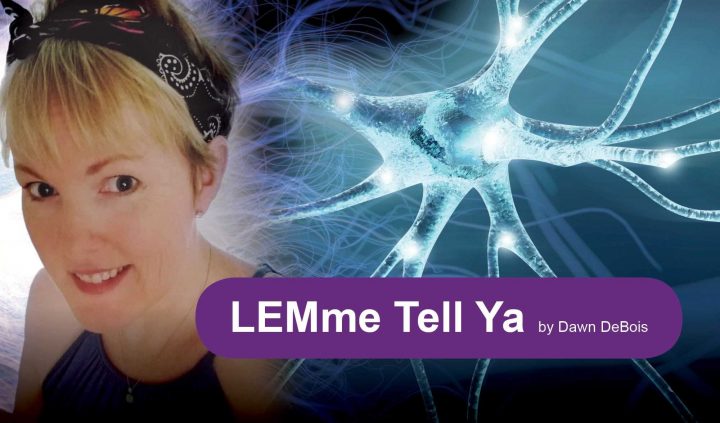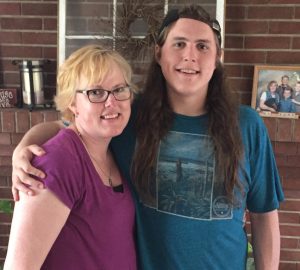LEMme Tell Ya About Medical Cannabis for Pain Relief
Written by |

First in a two-part series.
I am certain my children never thought they would see the day their mother would use cannabis, let alone share my experience about its benefits with the rest of the world. If anyone asked them about their mother’s stance on weed while they were growing up, they would all agree I was the biggest anti-marijuana person on the planet.
As a child, I was sent to a neighbor’s house one beautiful spring day to see if the little boy next door wanted to play. This was back in the early 1970s, when nobody entertained kids. I was 5 and had just been dropped on the doorstep of the family that kept me.
I remember walking across the front porch to the boy’s apartment, then the telltale skunky smell permeating from the doorway when his parents told me he couldn’t come out to play.
Upon returning to the kitchen table where Gram and my uncle were sitting, I said, “No, he can’t come out to play, but their place smelled like pot!”
“Pot?! How do you know what pot is?” the shocked adults at the table replied.
This was the first time I realized that pot was “bad.” The response by the adults taking care of me caused a gut reaction that stayed with me for decades. However, the memories of my hippie, flower-child mother, who attended Woodstock and had a VW van with its windows covered by weekend comics, included pot as a normal part of daily life.
It would not surprise me if “pot” was my second word after “Mama.” My baby book can neither confirm nor deny that assumption.
As I started learning the circumstances surrounding my mother’s death, I also was taught that if she hadn’t used drugs, she would have made better decisions. As a child growing up without my mom, those words echoed in every choice I made. I never smoked a cigarette, let alone tried weed.
While raising my sons, I remained steadfast in my stance against marijuana. But just imagine raising children, given what you now know about my childhood, in a state that was legalizing medical marijuana at the time. My kids often initiated conversations about the benefits of decriminalizing marijuana.
From middle school on, my oldest son, John, would quote facts to me about why marijuana should be decriminalized. His topics included the addiction rates of alcohol versus marijuana, tax benefits for states, and the safety of medicinal marijuana compared with pharmaceuticals for many conditions, including chronic pain.
During this time, my pain levels became extreme. Scar tissue and arthritis surrounding my Harrington rod fusion took hold. My sons witnessed me barely able to breathe when what I call “breath-stopping pain” radiated from the top of my fusion into my chest cavity. My co-workers saw me trying to keep my voice steady while on calls as muscle spasms shot me out of my chair.
In my early 40s, I officially became a chronic pain patient. Muscle relaxers weren’t keeping my muscle spasms under control, and not a single prescription narcotic would provide functional relief from the pain. I took months of short-term disability to try to regain control of my body. During this time, my primary care provider told me the pain would cause me to stop working, and I should prepare for a future on disability permanently.
My sons, by then either graduated or out of high school, each offered in their own time and approach how I might get some pain relief with medicinal marijuana. But I didn’t relent until my youngest son was off to college. Finally, I called my oldest son, John, and said, “OK, I’m ready to try it.”
His response was, “Really?! You want me to bring some right now?”
Imagine the surreal experience of my son teaching me how to smoke a bowl. Then think about him sharing knowledgeable advice about which cannabis strains provide relief for everything from pain to muscle spasms.
In my eyes, my child became an adult the day he taught me the basics of smoking weed. I became a believer in cannabis that day, when my breath-stopping pain finally dissipated.
Sadly, due to my anti-pot conditioning as a child, my kids grew up with a mother who suffered from debilitating pain.
Next week, how cannabis can help to alleviate other symptoms caused by neuromuscular disease.
***
Note: Lambert-Eaton News is strictly a news and information website about the disease. It does not provide medical advice, diagnosis, or treatment. This content is not intended to be a substitute for professional medical advice, diagnosis, or treatment. Always seek the advice of your physician or other qualified health provider with any questions you may have regarding a medical condition. Never disregard professional medical advice or delay in seeking it because of something you have read on this website. The opinions expressed in this column are not those of Lambert-Eaton News or its parent company, Bionews Services, and are intended to spark discussion about issues pertaining to Lambert-Eaton myasthenia.






Leave a comment
Fill in the required fields to post. Your email address will not be published.